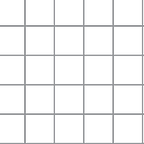“Make it personal” - Storytelling for television news— 5 questions for Peper Hofstede, RTL News
@Interactive Storytelling Meetup #5 –12 May 2016
Interview by Femke Deckers and Klasien van de Zandschulp
Telling a story for a television news show is probably one of the most constricted forms of storytelling. How to make an impact when you have little time, need to stick to the facts and have to work with limited footage?
Peper Hofstede works as an editor at the foreign desk of RTL News, one of the main news programs in the Netherlands. Trained as a playwright, the world of televions journalism still feels quite adventurous to her, even after eight years.
During this meetup Peper shared her storytelling adventures with us, including a funny behind-the-scenes-video! (which unfortunately we cannot share due to licenses)
- What are the key storytelling rules for television news?
“There are a great many ‘golden rules’, so I will limit myself to the shiniest of all: script your pictures. We are making television, not radio. So look at what the pictures already tell, and then use words to add to that. In this way you make both languages work together. And, if done right, viewers are encouraged to actually watch the item instead of just listening to it.
Also, pay attention to sound: if you see something on video, but you can’t hear it, it seems rather unnatural and just doesn’t come across as well. If you see a car driving, hearing its engine really helps with bringing your story to life.”
2. How do you keep your audience engaged with stories they have heard a thousand times already?
“By making it personal. Everybody has seen most fictional stories a thousand times before as well, but that doesn’t seem to bother anyone. You are still interested to hear about the gazillionth lovestory if you can identify with the protagonist. Storytelling for news isn’t that different in that respect: if you make it personal, people will be able to relate and thus not be bored.”
You are still interested to hear about the gazillionth lovestory if you can identify with the protagonist.
3. How do you choose and select all the different news items in a show?
“The script of a news show is completely fluid until the full program has been aired. Which stories actually make it onto television is hard to predict in the morning. Let’s say there is a big protest planned by airline employees, right before a big holiday rush. Potentially, this could be a big story, so we would probably send a reporter there.
At that moment though, a number of problems might arise. It might not be as big as promised. The unions might reach an agreement with the employers before the program is on. The protest might not be visual enough to make an interesting story for television (although this is less important if the content itself is important enough).
The script of a news show is completely fluid until the full program has been aired.
Then there might be all sorts of logistical problems: the reporter might get stuck in traffic and not be able to get back to the newsroom in time. Or there may be technical trouble.
In this case what was planned as an opening story, may well drop down the list right to the very end, if it reaches us in time at all. And, last, but most certainly not least, the story might have to be ‘downgraded’ or even skipped if a bigger news story comes along. If a plane drops out of the sky and there are Dutch people on board, for instance, that will always take preference.
The answer to the question ‘what is news and how important is it?’ depends on a great many factors and differs from day to day or even from hour to hour.”
4. What news story has made the biggest impression on you personally?
“Something I still dream of from time to time: the earthquake in Haiti in 2010. Just the sheer scale of it and the utter destruction, it was all so terrible. And at this moment, I am quite fascinated by the whole Brexit-story, which is just something completely new, undiscovered territory.”
5. What do you think is the future of news?
“Quality journalism will become even more important in the future. With so many sources available, it is of great importance to have a reliable, authoritative outlet that you can trust to serve no one but the truth and the audience.
When it comes to content, news stories will morph more into behind-the-news-stories, as it becomes more and more common for everybody to already know what has happened. Our job will be to add value and meaning to that.
News stories will morph more into behind-the-news-stories
On a more technical level I think the role of video will become more important and the focus will shift more and more to stories that explain what a certain event means for the person that is watching. News will become less top-down and more a cooperation with the audience, so to say.”
Peper closes her presentation by demonstrating the NYT VR: a virtual reality app the New York Times recently launched. She argues that VR storytelling for news story is an interesting development, it puts your audience at the center of news stories.
